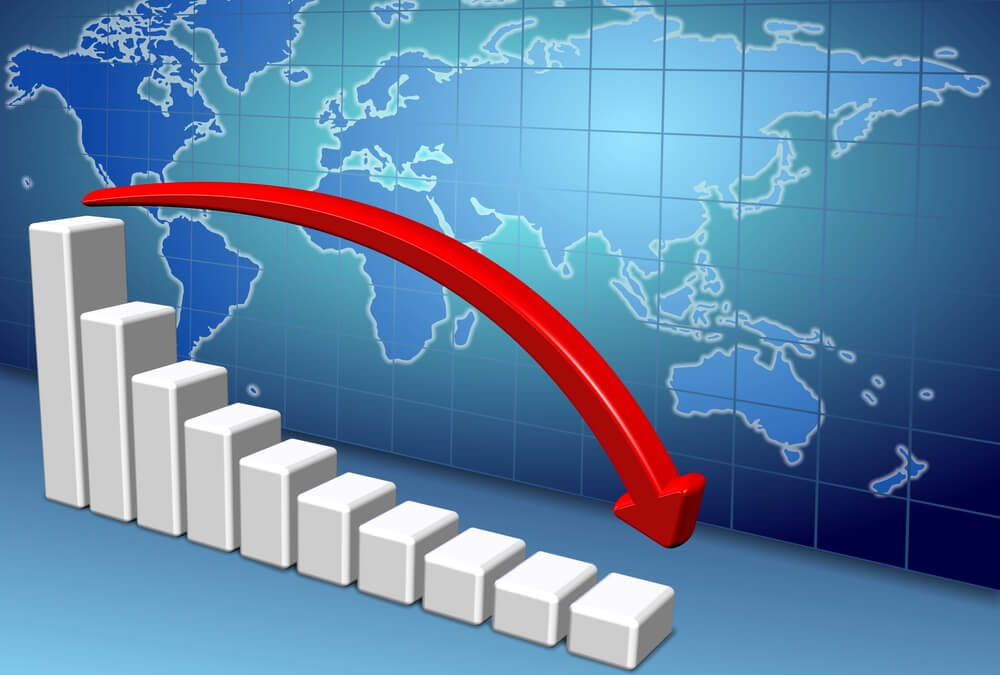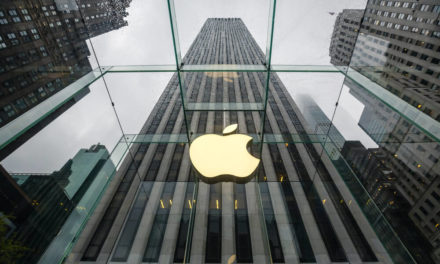U.S. stocks slumped as new signs pointing to a slowing global economy led worried investors to seek refuge in bonds, sending yields sharply lower and more in Friday’s Stock Market Update.
The sell-off in stocks knocked more than 300 points off the Dow Jones Industrial Average and put the benchmark S&P 500 index on track for a weekly loss.
Banks and technology stocks drove much of the broad slide. Investors shifted money into lower-risk, high-dividend stocks. Utilities and makers of consumer products were the only sectors to rise.
Those sectors became more attractive to investors seeking income as traders bought up bonds, sending yields lower. The yield on the benchmark 10-year Treasury note, which is used to set rates on mortgages and many other kinds of loans, fell to 2.45 percent from 2.54 percent late Thursday, a big move. That’s down sharply from its recent high of 3.23 percent in early October.
In another worrying sign, the yield on the 10-year Treasury note fell below the yield on the three-month Treasury bill. When that kind of “inversion” in bond yields occurs, economists fear that it can signal a recession within the coming year. That signal isn’t always correct, however.
The push into bonds comes as investors worry about slowing economic growth elsewhere in the world, especially Europe.
Key bond yields fell this week to their lowest levels in more than a year after the Federal Reserve said it was seeing slower growth in the economy and no longer expected to raise interest rates this year.
STOCK MARKET UPDATE
KEEPING SCORE: The S&P 500 index was down 1.7 percent by closing time. It was the market’s worst daily loss since Jan. 3.
The Dow dropped 411 points, or 1.6 percent, to 25,551. It had been down as much as 450 points. The Nasdaq composite, which is heavily weighted with technology stocks, slid 2.3 percent.
ANALYST’S TAKE: Investors are rebalancing their holdings as they “digest the new reality” of slower growth, said Marina Severinovsky, investment strategist at Schroeders. “We’re sort of coming back to Earth.”
Central banks have been positioning themselves to deal with the slowdown, she said, and that includes the Federal Reserve’s expectations for no rate increases this year.
Earlier this month the European Central Bank also reassured investors by saying it would push back the earliest date for interest rate increases. It also said it would offer ultra-cheap loans to banks, supporting their ability to keep lending.
“It’s very positive that, not just the Fed, but other policy makers have acknowledged the situation is kind of dangerous on the global slowdown and are taking action,” Severinovsky said.
ECONOMIC RED FLAGS: The fear gripping investors is being fueled by a steadily dimming outlook for the global economy. China, the world’s second-largest economy after the United States, is weakening. And other economies that depend heavily on purchases in China have suffered as a result.
Factory production in the euro currency alliance, for instance, has fallen at its steepest rate in about six years. In Germany, Europe’s largest economy, a survey of purchasing manager manufacturers posted its sharpest production drop in nearly six years. Orders to German factories have also tumbled.
“What’s really giving investors concern today is this weak global economic data here in the U.S. and in Europe,” said Jeff Kravetz, regional investment director for U.S. Bank Wealth Management. “It doesn’t necessarily change the fundamental story here, but we’ve had such a great year so far in U.S. equity markets and international markets that this may be an opportunity for some investors to take some profits.”
Smaller company stocks are often the first to be sold by investors looking to reduce risk, which explains why the Russell 2000 was down more than the rest of the market. Small companies, which are more dependent on the U.S. economy than big multinationals, tend so suffer more in economic downturns.
“When investors feel nervous about the economy and the outlook for the stock market, they want to sell the riskiest types of stocks, and that would definitely be small caps,” Kravetz said.
DON’T BANK ON IT: The decline in bond yields threatened the profitability of banks because it forces them to charge lower interest rates on loans. Bank of America slid 4.2 percent, JPMorgan Chase lost 2.9 percent, Citigroup dropped 4.1 percent and Wells Fargo fell 3 percent.
TECH TUMBLE: Technology companies, which would stand to lose more than other sectors in a slowing economy, also took heavy losses. Western Digital gave up 5.9 percent and chipmaker Advanced Micro Devices slid 4.6 percent.
MORE TURBULENCE: Boeing dropped 1.8 percent after Indonesia’s flag carrier became the first airline to seek to cancel an order of 737 Max 8 jets, which have been involved in two fatal crashes in the past six months.
LOOSE LACES: Nike stumbled 5.8 percent after disappointing sales in its vital North America market fell short of analysts’ forecasts and it warned of a sales slowdown.
The weak regional results overshadowed an otherwise solid third quarter for the athletic apparel maker, which is best known for its sneakers and athletic shoes. Revenue and profit grew during quarter, beating forecasts.
GOOD SPORT: Regional sporting goods retailer Hibbett Sports surged 21 percent after blowing away Wall Street’s fourth-quarter profit forecasts. The company reported profit of 57 cents per share while analysts expected 39 cents per share. Hibbett’s profit forecast for the fiscal year was also well above Wall Street’s expectations.
© The Associated Press. All rights reserved.




